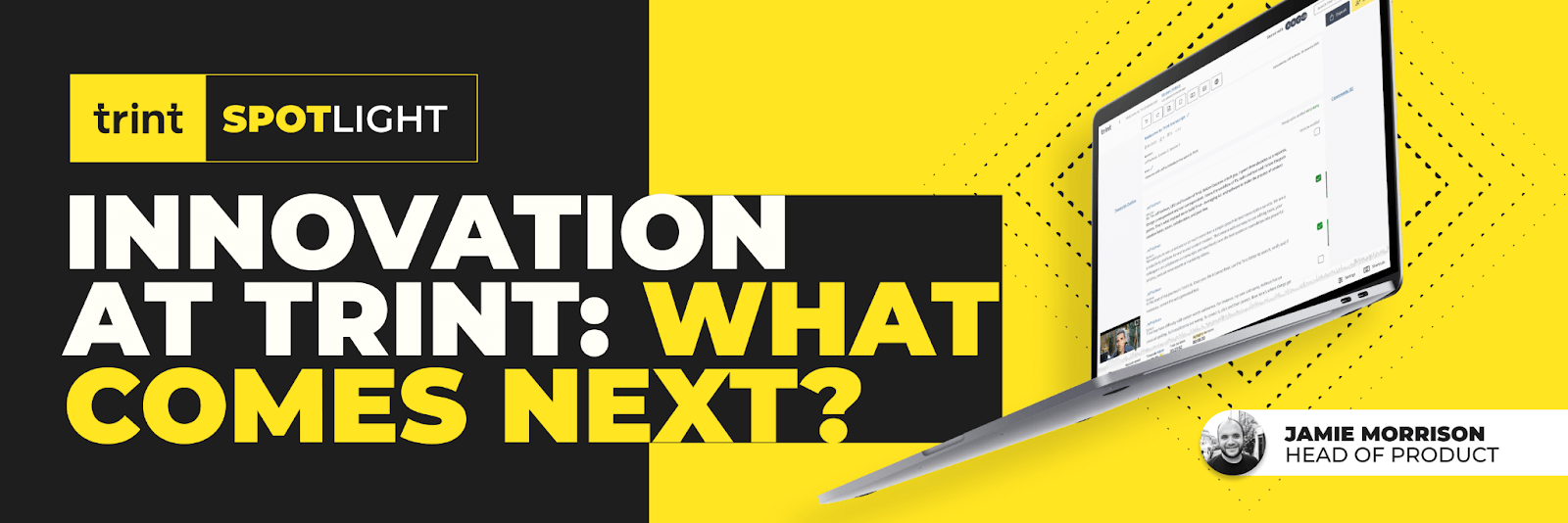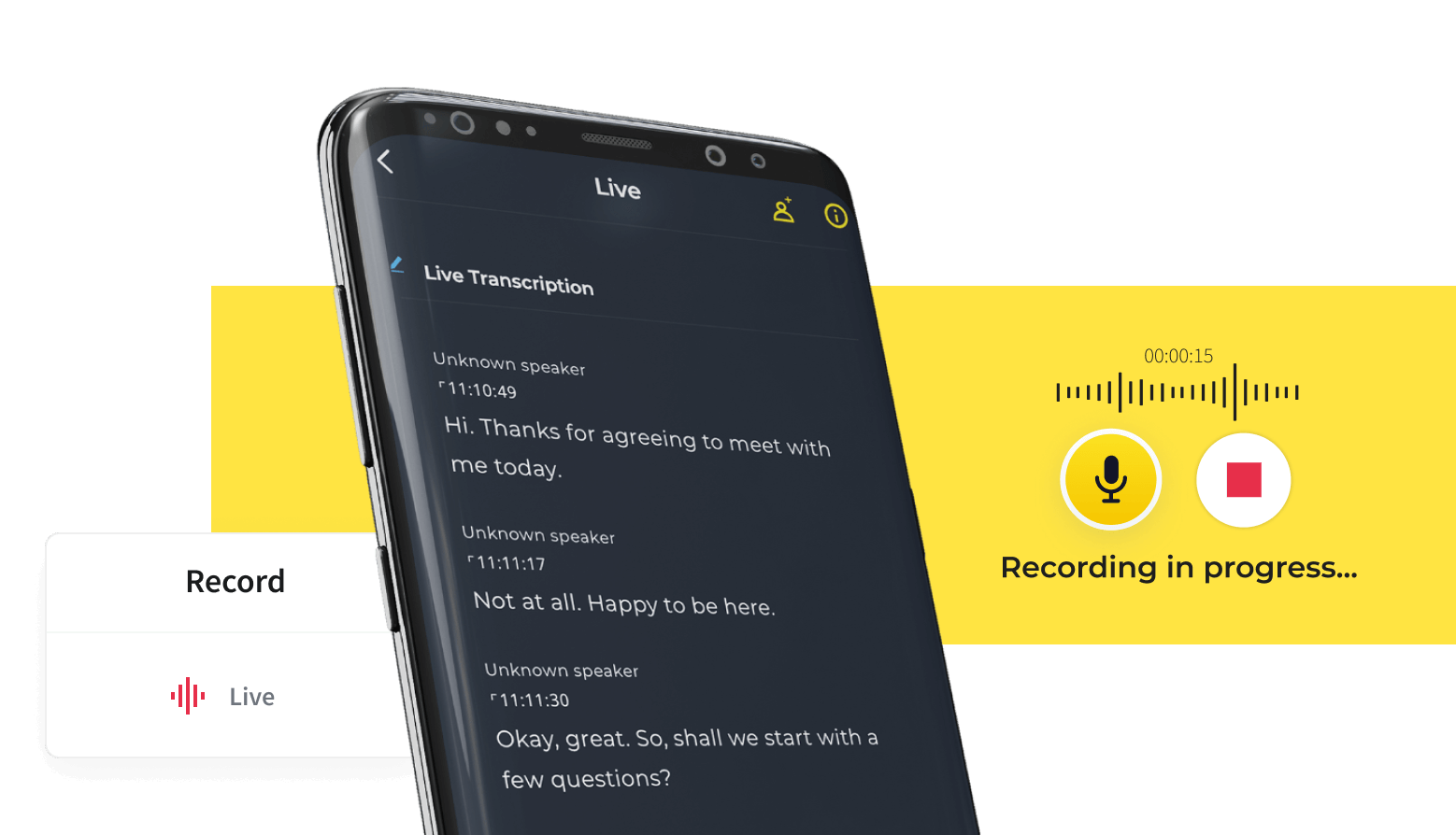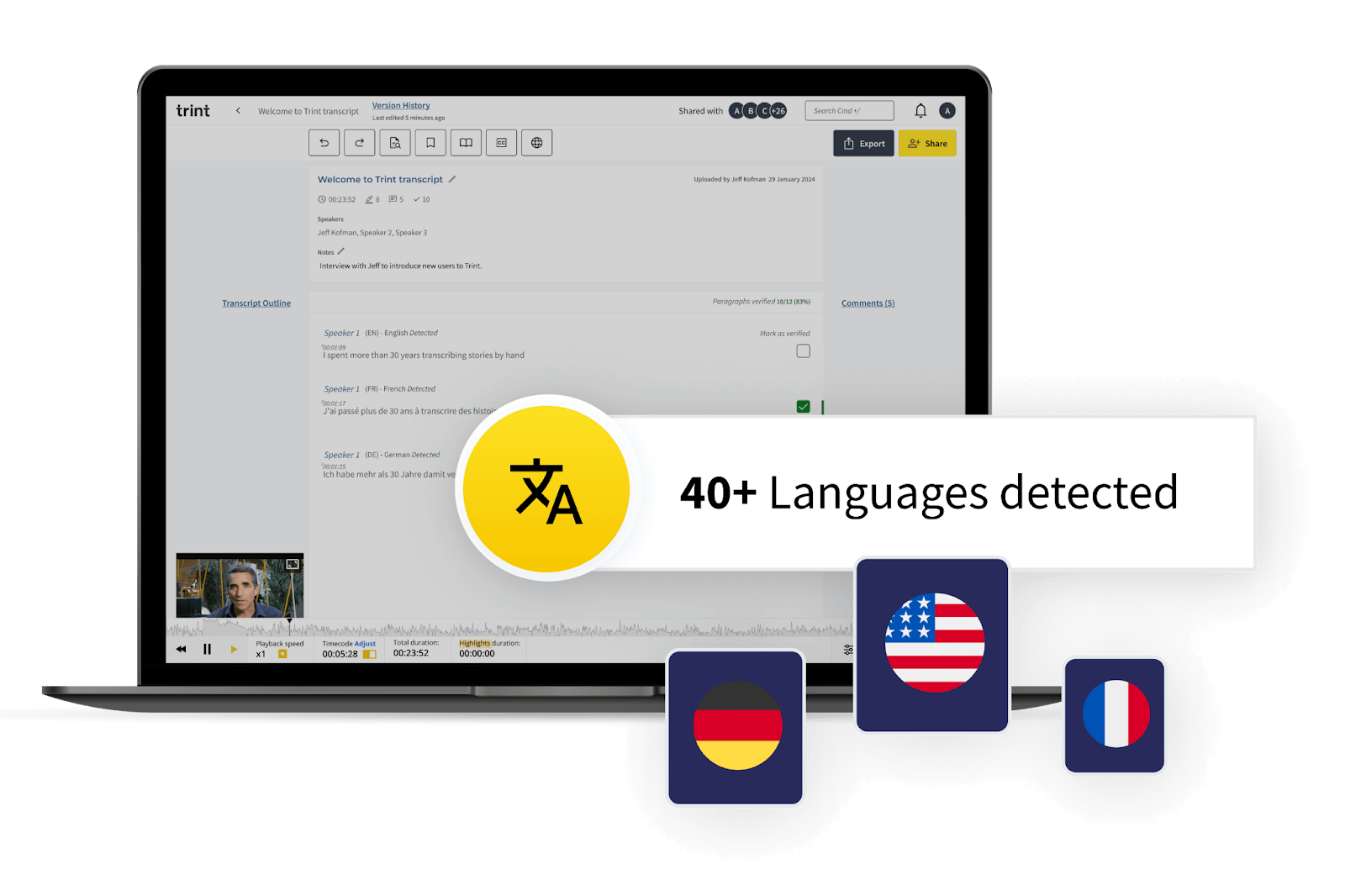
Often on the Trint blog we take a look back at what we’ve done, and how we did it. But today, our Head of Product, Jamie Morrison, is flipping that on its head – looking ahead to what we’re going to do, and how we’re going to do it.
In May 2023 we launched Mobile Live to Enterprise customers. We built Mobile Live to help reporters out in the field to record, transcribe, and share an interview in real time with their colleagues back in the newsroom. We’ve had a phenomenal response from our customers so far, and listening to their feedback has helped us to decide how to evolve our live transcription products.

First, we know that lots of events take place virtually, on tools like Zoom, Google Meet, and Microsoft Teams. We’ll be bringing live transcription to the Trint desktop app so that such events can be transcribed live too.
Second, we know that these capabilities have value beyond just our Enterprise customers. In fact, we’re hearing the majority of our customers would find those capabilities valuable, and our potential Enterprise customers would find it useful to try them out themselves before engaging with our Sales team. Therefore we’ll be bringing live transcription to everyone (with some limits) in the second half of 2024.
We recently announced we’ve been awarded Innovate UK funding through the Smart Grants programme to continue our development of our live multilingual transcription and translation technology.

Our vision is for our customers to be able to use Trint for any event, anywhere in the world. We can already transcribe in more than 40 languages and translate into more than 70, but today we only support a single language in a single file or single stream. If you’re a reporter covering the European Union, for example, you never know which of the 24 official languages is going to be spoken next, and there’s a good chance you won’t understand it! When trying to break news first, this is a bottleneck that matters. We’re working on live multilingual transcription and translation, so no matter which (or how many) languages are spoken, you’ll be able to understand what is being said in the moment, helping you tell your story faster.
And it’s not just formal events at international institutions where multiple languages can be spoken. My mum is from Pune, India and I can remember as a child overhearing her speaking with her family. Most of the conversation would be in Marathi, but occasionally they would say words or phrases in English which, because I couldn’t speak Marathi, would make my ears prick up (especially when I heard my name as well!). I tell this story not to make the point that I could have done with Trint as a child, but because we want to build a product that is useful for the entire world, not just English-speakers. That means our products need to mirror the way that language is spoken across the entire world – and multilingual transcription is a necessity.

The modern newsroom or business is flooded with amazing new tools and products which have become essential to getting the job done. But many of us have also experienced the ‘tab fatigue’ that can come from endlessly switching back and forth between screens to find the tool we’re looking for.
We know that it is essential for Trint to become a seamless part of our user’s workflows, and sometimes that means integrating Trint into the tools that are central to their day to day operations. We’re really focussed on doing exactly that with the leading tools being utilised by our customers – the most recent example being our integration with ENPS, the world’s most-used newsroom management tool. Creating a way for our media users to easily use Trint within ENPS is a great way to improve the workflows for tens of thousands of users worldwide. And there’s more to come.
I hope you’ll agree that we have a lot of exciting work in progress, but I also want to share with you the general direction we’ll be heading in further into the future.
The expectations we all have for the products we use have radically changed since OpenAI launched ChatGPT. But we agree with Kyle Poyar and Lenny Rachitsky: success is still going to come down to who can solve real problems for people best. There has been a race to bolt generative AI (GenAI) onto products everywhere, but the winners will be those who deeply understand the problems their customers face, and solve them using the incredible new capabilities that GenAI enables. Just bolting GenAI onto a product is like asking someone to season some food without telling them what the food is or who it’s for.
We will continue to lean into our expertise in storytelling and content creation, to make sure that we continue to solve problems people face in these workflows. That will mean more features like AI-powered Summaries that help people to understand their source material and find the moments that matter faster, for example sentiment analysis, keywords, image recognition, or automatic rough cuts.
It will also mean more ways to speed up content creation workflows; reducing the need for manual, error-prone work and the need for specialist skills to create rough cuts. This means continuing to listen to our users about how Trint fits in their workflow and identifying ways to improve it. This is likely to mean more iterative improvements to our Story Builder and Caption Editor features, to our exports and integrations with downstream media production tools, and other new things that we haven’t identified yet.